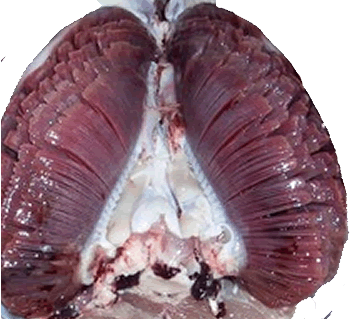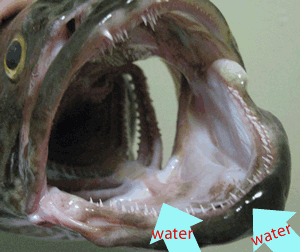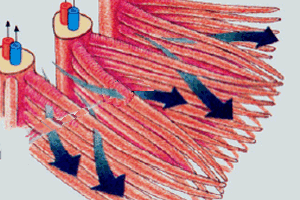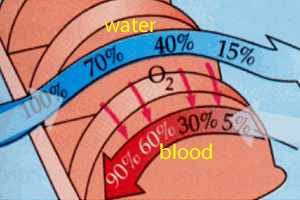
For most fish species gills work by the movement of water, in one direction, over the surface of the gill, where the transfer of gases is made (O2 in, CO2 out). The reason for this unidirectional flow of water, and not an inhaling and exhaling of water, is due to the energetics of the system. The energy that would be required to move water into and out of a respiratory organ would be much more than that used to move air because water is more dense and viscous.
The concentration of oxygen in water is much less than that of air. Fish, however, manage quite well because their energy demands are less than those of mammals due to the buoyant nature of water as opposed to weight supporting muscles for land creatures.

Rather than being a solid structure, the fish gill is finely subdivided to increase surface area and enhance gas exchange.

The blood flowing over the gill filaments usually moves in a countercurrent flow to that of the water moving over it. This allows for the most O2 to be taken in by the blood because the diffusion gradient is kept high by the blood picking up oxygen as it moves along, but always coming in contact with water that has a higher O2 content, as shown on the right. The blood receiving the O2 will continue to pick up O2 as it moves along because fresh water is being washed over the epithelial lining of the gills. An important aspect to remember here is that the water going over the gills needs to be moving in one direction either by the fish moving or a current flowing.

